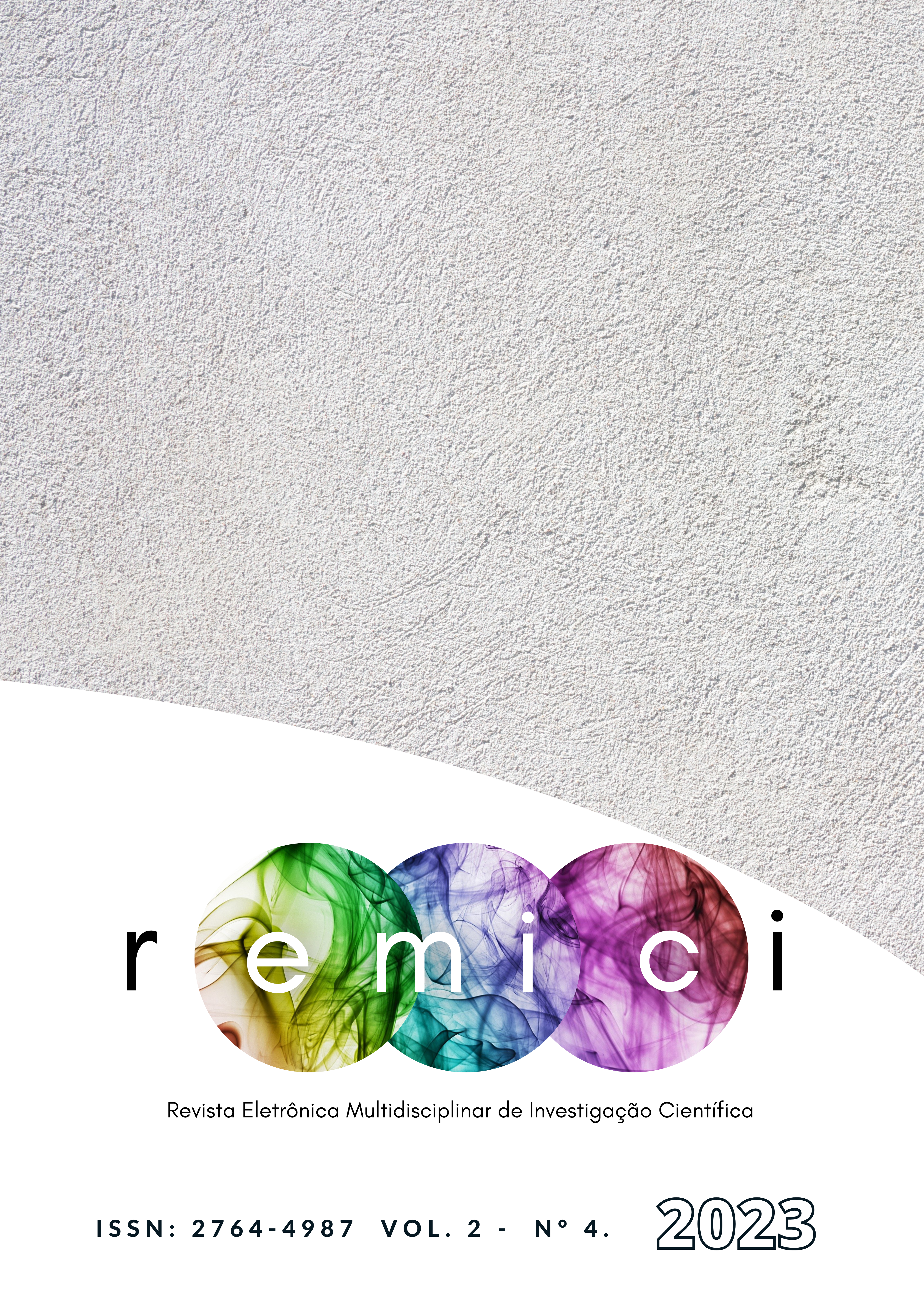AUTISM SPECTRUM DISORDER: FEMALE CASE REPORT TRASTORNO DEL
Main Article Content
Abstract
ABSTRACT
Most young people with autism spectrum (ASD) have, mainly, difficulties to communicate and interact with other members and present certain psychomotor adversities. In addition, they may have some stereotypes, and have a personality in which they find it difficult to perform daily tasks and emotional management problems, as they usually present pathological and excessive stress. The low number of Brazilian reports of girls with ASD and their particularities in neurodevelopment encouraged the preparation of this case report of a female patient with ASD. Thus, it is expected that there is greater clarification about the condition of ASD in females, its differences and similarities with others requested with autism.
Keywords: autism, girl with TEA, neuropsychomotor development.
Article Details

This work is licensed under a Creative Commons Attribution-NonCommercial-ShareAlike 4.0 International License.
References
ALMEIDA, S. I. M. Genes envolvidos na determinação do autismo. 2014, 46p. Monografia. Universidade Fernando Pessoa, Porto, 2014.
AMEIS, Stephanie H.. Coping, fostering resilience, and driving care innovation for autistic people and their families during the COVID-19 pandemic and beyond. 2020. Disponível em: https://www.ncbi.nlm.nih.gov/pmc/articles/PMC7374665/pdf/13229_2020_Article_365.pdf. Acesso em: 23 jan. 2021.
CARDONA, F. et al. Developmental Profile and Diagnoses in Children Presenting with Motor Stereotypies. Frontiers In Pediatric, Roma, v. 04, n. 126, p. 1-6, nov. 2016. Disponível em: https://www.ncbi.nlm.nih.gov/pmc/articles/PMC5120120/pdf/fped-04-00126.pdf. Acesso em: 07 dez. 2020.
DRAAISMA, D. Stereotypes of autism. Philosophical Transactions Of The Royal Society B: Biological Sciences, [S.L.], v. 364, n. 1522, p. 1475-1480, 2009. The Royal Society. http://dx.doi.org/10.1098/rstb.2008.0324.
FREEMAN, R. D. et al. Stereotypic movement disorder: easily missed. Developmental Medicine & Child Neurology, Vancouver, v. 52, n. 08, p. 733-738, 2010. Disponível em: https://onlinelibrary.wiley.com/doi/full/10.1111/j.1469-8749.2010.03627.x. Acesso em: 07 dez. 2020.
HEAD, A. M. et al. Gender differences in emotionality and sociability in children with autism spectrum disorders. Molecular Autism, v. 5, n. 01, p. 19, 2014.
HILLER, R.M. et al. Sex differences in autism spectrum disorder based on DSM-5 criteria: evidence from clinician and teacher reporting. Journal of Abnormal Child Psychology, v. 42, n. 8, p. 1381–1393, 2014.
HUFNAGEL, C. et al. The Need for Objective Measures of Stress in Autism. Frontiers In Psychology, [S.L.], v. 08, p. 01-04, 2017.
KASSEE, C. et al. Physical health of autistic girls and women: a scoping review. Molecular Autism, [S.L.], v. 11, n. 01, p. 01-22, 2020.
LAI, M. et al. Quantifying and exploring camouflaging in men and women with autism. Autism, [S.L.], v. 21, n. 06, p. 690-702, 2016.
LEHNHARDT, F. G. et al. Sex-related cognitive profile in autism spectrum disorders diagnosed late in life: implications for the female autistic phenotype. Journal of Autism and Developmental Disorders 46(1): 139–154, 2016.
LEONARD, H. et al. Unpacking the complex nature of the autism epidemic. Res Autism Spect Disord. 2010; 4:548-554.
MARINHO, E. A. R.; MERKLE, V. L. B. Um olhar sobre o autismo e sua especificação. IX Congresso Nacional de Educação – EDACERE e III Encontro Sul Brasileiro de Psicopedagogia, 2009.
MERGL, Marina; AZONI, A. S. Cíntia. Echolalia’s Types In Children With Autism Spectrum Disorder: Cefac Review, nov-dez 2015. Disponível em: https://www.semanticscholar.org/paper/ECHOLALIA%E2%80%99S-TYPES-IN-CHILDREN-WITH-AUTISM-SPECTRUM-Mergl-Azoni/fcb0e5e9b5f493d249b3260ae34476a47b3c0b67. Acesso em: 18/08/2021.
MOSELEY, R. L. et al. Self-reported sex differences in high-functioning adults with autism: a meta-analysis. Molecular Autism, [S.L.], v. 9, n. 1, p. 1-39, 2018.
NORTE, Douglas Mollerke. PREVALÊNCIA MUNDIAL DO TRANSTORNO DO ESPECTRO DO AUTISMO: REVISÃO SISTEMÁTICA E METANÁLISE. 2017. 90 f. Dissertação (Mestrado) - Curso de Medicina, Universidade Federal do Rio Grande do Sul, Porto Alegre, 2017.
RUSSO, Francine. The Struggles of Women Who Mask Their Autism. 2018. Disponível em: https://www.theatlantic.com/health/archive/2018/02/women-camouflaging-autism/553901/. Acesso em: 12 set. 2021.
RYNKIEWICZ, A. et al. An investigation of the ‘female camouflage effect’ in autism using a computerized ADOS-2 and a test of sex/gender differences. Molecular Autism, v. 7, p. 10, 2016.
SAAD, A. G. F; GOLDFELD, M. A ecolalia no desenvolvimento da linguagem de pessoas autistas: uma revisão bibliográfica. Pró-fono Revista de Atualização Científica, São Paulo, n. 21, p. 255-260, 2009
SAÚDE, Ministério da. Diretrizes de Atenção à Reabilitação da Pessoa com Transtornos do Espectro do Autismo (tea). 2014. Disponível em: https://bvsms.saude.gov.br/bvs/publicacoes/diretrizes_atencao_reabilitacao_pessoa_autismo.pdf. Acesso em: 23 jan. 2021
SAÚDE, Ministério da. LINHA DE CUIDADO PARA A ATENÇÃO ÀS PESSOAS COM TRANSTORNOS DO ESPECTRO DO AUTISMO E SUAS FAMÍLIAS NA REDE DE ATENÇÃO PSICOSSOCIAL DO SISTEMA ÚNICO DE SAÚDE. 2015. Disponível em: https://bvsms.saude.gov.br/bvs/publicacoes/linha_cuidado_atencao_pessoas_transtorno.pdf. Acesso em: 23 jan. 2021.
TIERNEY, S. et al. Looking behind the mask: social coping strategies of girls on the autistic spectrum. Research in Autism Spectrum Disorders, v. 23, p. 73–83, 2016.
WHITMAN, T. E. O desenvolvimento do autismo: social, cognitivo, linguístico, sensório-motor e perspectivas biológicas. Social, Cognitivo, linguístico, Sensório-motor e Perspectivas Biológicas. Revista Multidisciplinar de Psicologia, v. 13, n. 47, 2019. Disponível em https://idonline.emnuvens.com.br/id/article/view/1983. Acesso em: 02 mar. 2021.
YANG, J. et al. Nrf2 Activators as Dietary Phytochemicals Against Oxidative Stress, Inflammation, and Mitochondrial Dysfunction in Autism Spectrum Disorders: A Systematic Review. Frontiers In Psychiatry, Suiça, v. 11, n. 11, p. 1-17, 2020. Disponível em: https://www.frontiersin.org/articles/10.3389/fpsyt.2020.561998/full. Acesso em: 01 mar. 2021.

